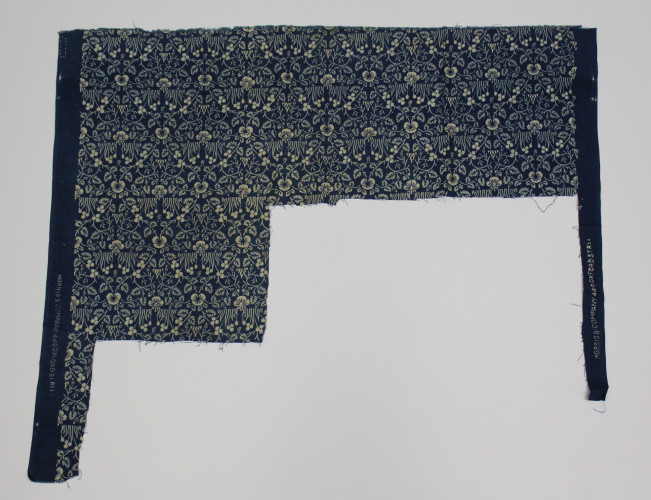‘Eyebright’ was designed by William Morris in 1883. The pattern was achieved using the indigo-discharge process, whereby the cotton was dyed in indigo blue and the pattern then extracted and over printed. The small ‘net’ repeat is formed of white eyebright flowers and buttercups. The pattern was also available in blue, white and yellow weld, a natural dye derived from a flower. The pattern was initially intended to be used as a lining for Morris & Co.’s heavy wool curtains (two widths matched the width of a curtains) but was used as a furnishing fabric in its own right. May Morris claimed that Eyebright, and another pattern Borage ‘were small patterns intended for dress’, revealing Morris’s intention to expand the business beyond interior fabrics. A dress of Eyebright made around 1900 is in the The Art Gallery of Australia’s collection (996A38). This offcut was one of a collection of fabric samples (F443 – F453) once belonging to William Morris’s friend Rosalind Howard, Countess of Carlisle.

